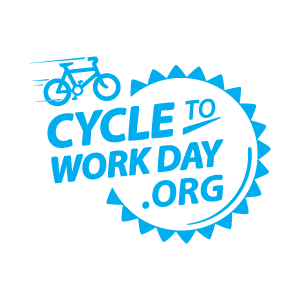Last week we held #BCS2014 – our seminar on behaviour change. Not only did our wonderful speakers treat everyone to some great presentations, but we grabbed each of them for a quick chat on why they’re excited about behaviour change. Check out their responses below!
Cycle to Work Week
Cycling to work brings many positives – physical, mental, environmental and financial – so here’s a quick run down of why you should hop on your bike!
Cycling is a great way to improve your general health and fitness. According to the British Heart Foundation, around 10,000 fatal heart attacks could be avoided each year if people kept themselves fitter. Incorporating cycling into your daily commute is a great way to get some exercise if you’re already busy – whilst going for a swim or lifting some weight requires you to take some time out of your day, cycling to work fits in with what you already have to do.
Other physical benefits of cycling include the fact that it’s a low-impact exercise, with 70% of your body weight going through the saddle and handlebars rather than your ankles. This makes a big difference if you’re looking to lose weight, as the reduced stress on your joints means you’re less likely to get injured as you build up your stamina.
It can also help you avoid illness! According to research from the University of North Carolina, people who cycle for 30 minutes, five days a week take about half as many sick days as those who don’t.
If you regularly have to deal with the stress of late or overcrowded trains, then cycling could provide you with a double de-stressing benefit. Not only do you avoid becoming too acquainted with a stranger’s armpit, but regular exercise reduces levels the stress hormone cortisol, meaning you’ll be in a great mood once you get to work!
Of course, there are huge environmental benefits to cycling in that you’re not producing carbon emissions whilst you travel. With 49% of commutes in England and Wales under 5km (typically taking 15 minutes to cycle), there’s huge scope for emissions to be reduced.
The cost of commuting can be a burden, particularly if you work in London, so choosing to cycle instead of getting the tube could save you heaps of cash. An annual Zone 1 – 3 travel card in London costs £1,472 – whereas cycling is free apart from the cost of your bike. A good bike for commuting can cost as little as £100, with the majority of bikes available under £500 – so it makes financial sense to start cycling.
So now you know, why not consider making the switch to two wheels instead of two rails?
For more information about Cycle to Work day, please visit their website: https://www.cycletoworkday.org/
Being serious about wellbeing
Your employees are your biggest asset, so by looking after their health and wellbeing you look after the future of your business.
According to research by HR magazine, over half of those they surveyed claimed that employee health and wellbeing were ‘important’ to the business. Why is it then that only 17% linked a successful health and wellbeing strategy to the success of their business?
The costs of ignoring well-being.
In 2012, employee absence cost the UK economy £14 billion – that’s the equivalent of £975 per employee. But the poor health of your employees doesn’t just cost you money – it costs time, reduces service quality and harms your output.
But it’s not just absent employees you should be concerned about. ‘Presenteeism’ – attending work whilst unfit or unproductive – is harder to measure but could cost as much as absenteeism. The Centre for Mental Health calculates that ‘presenteeism’ costs the UK economy £15.1 billion a year – based on psychological health issues alone. Caring for your employees’ mental and physical wellbeing is key to a productive, healthy business.
How to address employee wellbeing
Addressing the wellbeing of your employees shouldn’t be as simple as setting up an assistance phone line or providing one-off seminars. To ensure the continued health and productivity of your workforce your wellbeing strategy should be cohesive, comprehensive and inclusive. By providing continued interaction and support to your employees you can drive lasting behaviour change.
Through a customisable series of modules, Jump encourages and rewards your employees for taking positive steps towards not only personal well-being, but also sustainability. It provides an online platform with regular digital communication and feedback as well as real rewards to make your workforce more sustainable.
If you’d like to learn more about our employee engagement programme, please visit https://teamjump.co.uk
To hear more about how Jump Healthy Planet: Healthy Team could work for you or to request a brochure, please contact Robin Farwell at [email protected] or call 0207 326 5055.
Engaging employees in sustainability and wellbeing
Our Business Development Co-ordinator, Robin Farwell, is intimately involved in developing our employee engagement platform, Jump Healthy Planet: Healthy Team. With changes being made and new modules being added all the time, it’s been a busy – and exciting – period for him to be involved with the programme.
Here is his insight into the developments that are being made.
“At Jump (Green Rewards) we recognise the challenge companies face in maintaining and building ongoing engagement amongst employees for sustainability and well-being. It’s all too easy to create a buzz around key dates like World Environment Day or Movember with stunts and events, however maintaining that enthusiasm on an ongoing basis can be difficult. Our Jump programme is designed specifically with this in mind. The interactive modules, combined with our unique Green Points reward currency, will motivate teams month in, month out.
Jump is developing fast for us and in the last month we’ve added two exciting new modules, stress management and volunteering. We have a range of already established modules such as energy saving and cycling to work that are delivering great results for our current clients.
Through talking to our clients with staff based mainly in the UK and some internationally, we’ve now added new functionality so that it will work for people wherever they’re based. We want to make sure that whole teams will genuinely feel part of the programme and avoid any suggestion it’s a scheme just for UK staff or head office staff.
We’re constantly looking for ways to add more value to our programme by consulting with our current clients. The way we have built and run Jump means that we can incorporate their feedback to customise the platform for them. This flexibility is invaluable and we think it really makes the programme standout.”
For more information on our employee engagement scheme, Jump Healthy Planet: Healthy Team, please visit www.teamjump.co.uk
Please contact Robin in order to request a brochure with further information or to arrange a telephone interview demonstrating how the scheme is working for one of our current clients.
Better employee engagement
Our focus in 2014 is on bringing well-being and sustainability together.
Did you know that only 33% of organisations claim to have a wellness culture in place, although 81% have indicated their intention to create one? Whilst in a recent survey, 93% of CEOs regard sustainability as key to the future success of their business, with 76% believing that embedding sustainability into their core business will drive revenue growth and new opportunities. We want to help you embed well-being and sustainability into your organisation through effective employee engagement and rewards; and to us, well-being means linking healthy living for your employees with wellness for the environment and the communities in which you operate.
Our Jump programme will creatively engage and reward your people on an ongoing basis for taking positive steps; these may be cycling to work, volunteering in the community, energy saving at work, etc. The programme is modular and can be fully customised for your company.
We are already working with market-leading organisations and current activities for clients include:
- Working with Barclays and their 23,000 branch staff in the UK
- Working with the London Borough of Havering on a scheme to reward all their 100,000 households for reducing, reusing and recycling waste
If you would like us to email you our Jump brochure, then let us know; alternatively, why not book a 30 minute phone call for one of our team to take you through a live demonstration of how our programme is working for one of our clients? Drop us a call on 020 7326 5055.
Richmond Towers Jump(ed) on it.
Richmond Towers, the UK’s longest-established PR agency, this summer signed up to our Jump: Healthy Planet Healthy Team initiative. Helen Jones, an account executive working in the company’s sustainability team, is participating, cutting back on tube journeys by walking instead. She spoke to Julian Blake about the scheme – and Richmond Towers’ efforts to recycle and cut energy waste.
“We’re a PR agency specialising in food, drinks and sustainability in three dedicated teams. We’re in central London, based right in the heart of Soho. There are about 24 of us, so although we’re long established, we remain fairly small.
“Sustainability has always been important for Richmond Towers. On the sustainability team we work with a wide range of companies in the sector, from manufacturers of renewable technologies to LED lighting companies. All of our clients have an eco slant, so the green message is always in our minds when we’re talking to journalists or writing copy.
“From our point of view on the sustainability team, the Green Rewards scheme is something that’s quite close to our hearts. We know the importance of getting the green message out there, and also encouraging people to get involved, so it’s definitely something that we’re strongly behind.
“I’ve signed up for the walking module within the Jump scheme. It fits in with my lifestyle, as I quite often walk a couple of extra stops down the line and get on the tube there to get a bit of extra exercise. It also cuts my tube journey down, which is a bonus, because the tube’s not very pleasant – particularly during the summer!
“I live in Finchley Central, and I get the tube to Tottenham Court Road, which is about a 25-minute journey. I usually do my walking in the afternoons, so instead of getting on the tube at Tottenham Court Road, I walk to Warren Street, which is roughly a mile and takes about 20 minutes.
“I haven’t attempted to walk all the way – it’s about seven or eight miles so I don’t think I’m ready for that just yet!
“Jump (Green Rewards) is a really good idea because it incentivises you to get moving and go green at the same time. I was doing these walks to Warren Street anyway, but it’s encouraging me to do it more often now, because it’s at the back of my mind that it’s a part of this scheme. It gives you that extra boost to do it.
“I always feel better when I do a bit more walking. It clears my head. If I spend all day in the office it can get quite stuffy, which makes me tired. If I then just leave work and get straight on the tube it’s not great, so it always helps to have a bit of a walk first.
“I only signed up for the walking module recently, but I’m intending to build up the amount of time I walk per week, and keep getting better at it.
“I’ve looked at what Green Points get you and there seems a good range of things on offer. The points are a good idea, and I also like the fact that you can donate to charities as an alternative – I think that’s a nice touch.
“I’m all for eco products – it’s part of my job! I’m also very interested in recycling and living a greener lifestyle in general, so I think the scheme is great.
“We’re quite committed to recycling at Richmond Towers. We have several big paper recycling bins, which people are very good at using, and we also have recycling bins for plastic bottles and tins. We’ve talked about lighting as well, and the possibility of switching to LED bulbs to make our meeting rooms more eco-friendly.
“We also place great emphasis on cutting back on waste. The last person to leave the office has to switch off all the lights and air conditioning, and everybody shuts down their computers daily. In terms of food waste, we’ve just implemented a system where everybody has their own lunchbox to keep their food in, limiting the amount of food people bring in. Now everybody knows which is their individual food and buys the right amount based on what they need for the week. There’s a lot less waste as a result, although I do feel there’s just too much packaging around in general.”



